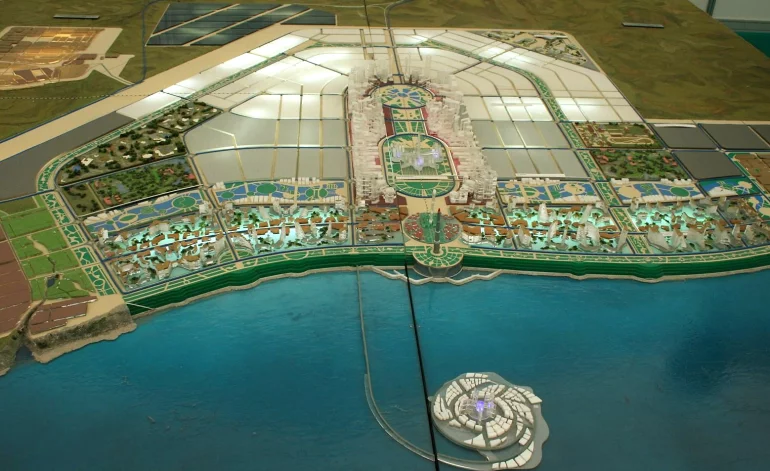
N.B. Since January 1, 2019, no casinos work in Azov City. The gambling zone was closed.
According to the law on state regulation of the organization and conduct of gambling and Amendments to Certain Legislative Acts of the Russian Federation adopted at the end of 2006, the Russian federal government created four gambling zones. As you know, all gambling-type institutions should be located only in their territory.
The first step was Azov City. Initially, it was located on two thousand hectares on the border of the Rostov area (Azov region) and Krasnodar (Shcherbinovsky area). After some time, the part of the zone located in the Rostov region was eliminated.
Initial Plans for Azov City
Infrastructure in the assigned territory was practically absent; there were no paved roads (the nearest town, Yeisk, is within fifty kilometers), communications, or buildings. Everything had to be created from scratch.
The Russian government promised to allocate eighteen billion rubles from 2008 to 2012 for the development of a tourist and recreational zone, Primorskaya, which includes Azov City. This money was to be used to construct water supply and pipelines, roads, a small airfield, power lines, a sea marina, and other facilities.
At the first auction, fifteen sites were available for rent, a total area of fifty acres. Half a billion rubles were allocated from the regional budget of the Krasnoyarsk Territory for infrastructure development.
To protect the interests of gambling operators, the nonprofit organization Association for the Development of Azov City was created. It connects the Rostov and Krasnodar regions.
Azov City History
Here are some milestones in the history of the first Russian gambling zone.
- Construction of the first casino was launched in late 2008.
- In January 2010, the Oracle Casino opened its doors to customers, and in October, the Shambala Casino followed suit.
- However, in 2010, the government of the Krasnodar Region decided to relocate the zone to Anapa, and the Association for the Development of a Gambling Zone, Azov City, supported this idea.
- A little later, the Russian State Duma amended the law on gambling, excluding the Rostov region from the list of areas where gambling zones are permitted.
- In early 2011, the Russian government eliminated a part of Rostov Azov City by its decision. After that, conflicts between tenants and landowners of existing casinos and the regional authorities began.
- In the spring of 2012, Prime Minister Vladimir Putin ordered the cancellation of the elimination of Azov City and even announced its expansion. The investors reacted immediately, and many of them started the construction of new facilities.
- On December 31, 2018, the gambling zone was liquidated.
Now, it does not work.
| Casino | Deposit methods | Withdrawal methods | Accepted currencies | |
|
+7
|
+6
|
$, €, ₽, ₴ | ||
|
+4
|
+3
|
$, €, ₽, KZT | ||
|
+6
|
+6
|
$, €, ₽, KZT, C$, kr, zł, ₴ | ||
|
+12
|
+11
|
$, €, ₽, C$, ¥, kr | ||
|
+9
|
+8
|
$, €, ₽ | ||
|
+9
|
+7
|
$, €, ₽ | ||
|
+12
|
+8
|
$, €, ₽, KZT, kr, zł | ||
|
+6
|
+5
|
$, €, ₽ | ||
|
+1
|
+1
|
$, €, ₽, KZT, kr, zł, ₴, YTL | ||
|
+6
|
+7
|
$, €, ₽, ₴ |
Casinos in Azov-City
Azov City had two casinos:
- Oracle,
- Shambhala.
Casinos operated in the atmosphere of healthy competition and offered the most popular casino games in the region:
- various types of poker,
- blackjack,
- roulette,
- slot machines, and so on.
The casinos periodically held poker tournaments. The customers also participated in exciting promotions. There were bars and restaurants, and from time to time, pop stars performed in the casinos.
Azov City Now
Many players and gambling experts predicted an excellent future for Azov City, but they proved to be wrong. The gambling zone was closed.






















